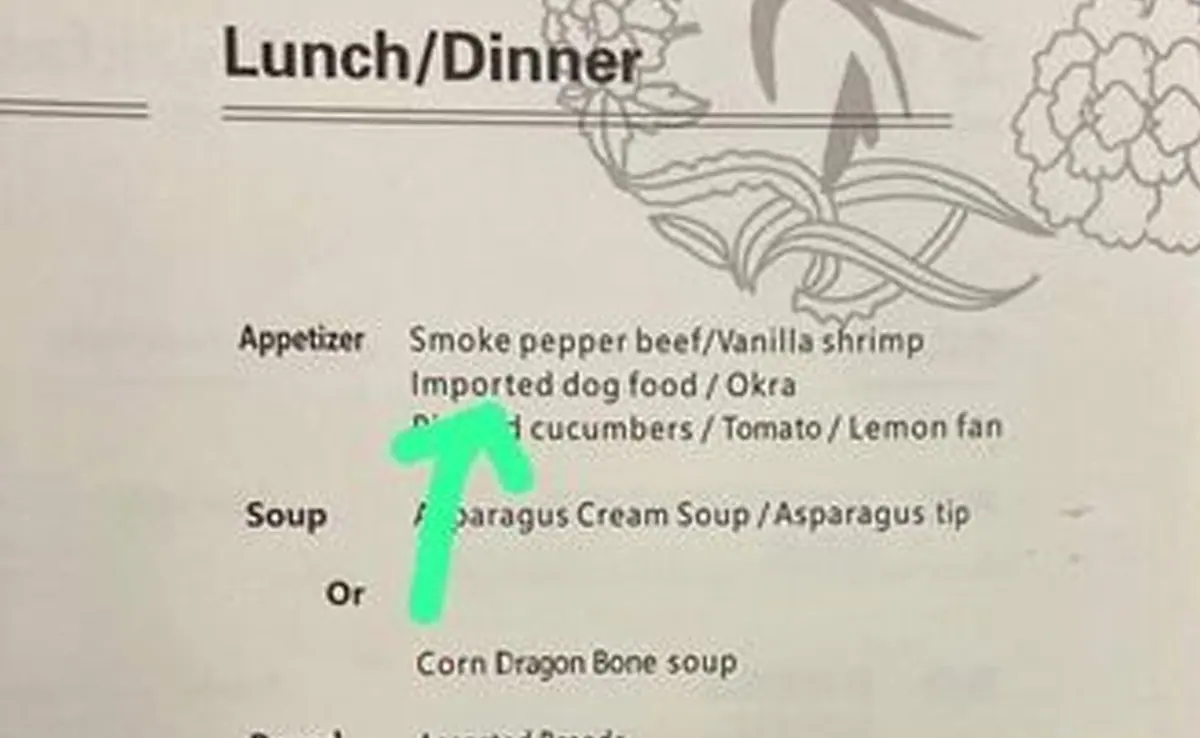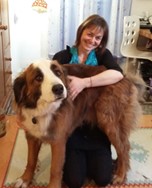We’ve all seen the hilarious menu translations or funny signs on holiday. Mistranslations can be a source of real humour, and the internet is full of lists of translation fails.
But for international brands, mistranslations aren’t so funny. They can cause offence, brand reputation damage and ultimately, huge costs.
So how do these mistakes happen? How does a poor translation leave the building, and, most importantly, how can we prevent it?
When it goes wrong - 7 mistranslation examples
First, let’s take a look at some examples of mistranslations.
1. Amazon’s Swedish website launch
When Amazon launched their Swedish website, the product descriptions were littered with mistakes, presumably from an (unchecked) machine translation.
The mistranslations ranged from the hilarious (CK boxer shorts became “men’s luggage trunks”) to the downright offensive – pearl earrings were described as being perfect for “European prostitutes”.
2. A hotel with “killer views”
Usually though, text that goes through machine translation (MT) is caught at some stage during the human review process. One example comes from Comtec linguist Lorena Di Nola, who at the time was leading the Italian localisation team of a well-known travel site.
She told us “The MT had translated “A hotel with killer views” as “Hotel con vista sull’assassino”, which literally means a hotel with a view of a killer. Alfred Hitchcock would have loved that hotel, regular guests not so much!”.
3. China Eastern Airlines serves up “dog food”
Another travel-related whoopsie, this time on the in-flight menu for China Eastern Airlines’ business class.
Worryingly, “Imported dog food” was listed as an appetiser option. At the time of writing, the original FB post has received over 1k likes, prompting comments such as “When you read the rest of the menu, almost 90% of the English is wrong. Such a joke as an international airline.”

Photo credit: Conrad Wu via Facebook
4. The office supplies catalogue recommends a “she-wolf”
Another MT mishap was caught just in time by one of Comtec’s linguists, Rowena Woolner.
She told us “While post-editing an office supplies catalogue, I saw a specification for a magnifying glass, “une loupe” in French. However, the MT algorithm had decided to wrongly interpret this as the feminine form of “loup“, meaning wolf, and proceeded to give a lovely description of how invaluable the she-wolf might be around the office. It made for a very interesting image…”.
5. A children’s clothing brand with problematic product descriptions
Post-editing turns out to be a critical stage of the MT review process, as Rowena gave us another recent example, this time from a children’s clothing brand.
“What should’ve been a description of some very pretty pink sparkly shoes for a little girl, turned out to be highly suggestive,” Rowena told us. “Basically, the machine translation made a complete hash of quite a simple, innocent translation and implied that these were the kind of shoes that might cause a girl to lose her virginity!”
6. A costly product miscategorisation
Another travel example comes from Lorena again, who was translating a wordlist for the same travel site’s inventory.
She says “The text was provided without any context by the US head office. For the word “townhouse”, we used an Italian word describing a lovely house. It turns out “townhouse” was being used to mean “guesthouse”. As a result, thousands of properties were listed on the Italian site as quaint private houses, rather than B&Bs. The company probably lost many bookings and revenue in the process, until the mistake was spotted and fixed in a hurry.”
7. Netflix mistranslates a kids’ film title
Unbelievably, some mistakes make it past several stages of review, and once that mistranslation is out in the wild, undoing it is very costly.
A recent example is the Netflix family movie “Chupacabra”, about a mythical, vampirical creature who sucks the blood of goats. “Chupacabra” literally means “goat sucker” in Spanish, but for some reason, the title got shortened (and released) as “Chupa”, a slang term for a sex act.
Spanish-speaking Twitter had a field day; it’s safe to say someone at Netflix HQ was having less fun.
But… How did it get that far?
As we’ve seen, even the biggest players (with the biggest budgets) can get it wrong. So, how does it happen?
-
Over-reliance on Machine Translations (MT)
It can be tempting to cut corners and use MT as much as possible. Which is fine… As long as you keep a human (or several) in the loop. Post-editing is a crucial step in any automated translation process; this technology is improving all the time but it’s still not perfect, as the examples above show.
Lorena says: “In the case of “killer views” the root cause was simply MT gone wrong. Using MT without human post-editing remains a big no-no.”
As we discussed in a recent blog post, there are several factors that trip up AI-based translation tools, of which MT (like Google Translate) was one of the first iterations.
For example, cultural nuance, low-resource languages (where there’s scant published content on which to base the algorithms) and technical terminology all prove tricky for purely code-based tools.
-
Lack of research = lack of accuracy
Time spent researching the topic as well as the audience (source and target) is key to an accurate translation.
Again, a recent blog post on the creative genius of translators showed how crucial the research stage is. By not budgeting for that time, you run the risk of missing something, from market regulations to brand name clangers.
Let the Chinese Coca-Cola “tadpole chomping on wax” fiasco be a warning to us all.
-
Cultural gaps
Not understanding cultural nuance can account for huge blunders, even when the language is supposedly the same.
For example, the Spanish spoken in Spain is very different to Latin American Spanish (and even within the LatAm countries, there are huge differences).
In LatAm, for example, the language is very formal; you would always use “usted” to refer to someone you don’t know very well (the polite third person). In mainland Spain, however, the use of “usted” is dying out, and even considered old-fashioned.
-
Missing context
Context is everything, especially when remote teams are working from a brief from a Head Office. Even differences between American and British English can cause problems, as we saw from Lorena’s townhouse/B&B example.
Without the involvement of a professional translator or localisation expert, it may not be obvious to the source audience where the problem lies, and therefore impossible to catch. As the old adage goes, you don’t know what you don’t know.
-
Poor sign-off process
When you’re pushed for time, it’s very tempting to ask the French/German/Spanish speaker in the office and take their word for it, but a solid QA process is crucial.
As we saw in the Chupacabra example, somehow a movie title made it from executive meeting to creative brief, to artwork stage, to production and finally to international launch, only for the intended audience to be the ones to finally spot that what was being proposed was offensive.
-
Slang, idioms or expressions
These are notoriously hard to translate. So even a system that’s previously served you well in the past (Google Translate, or the French speaker on your team) might fall at this hurdle.
An example is “Don’t get cold feet”. Translated mechanically, this makes no sense given its original intent. A professional translator would know of a similar idiom or would translate more simply, understanding the original meaning was “don’t get nervous”.
How to catch a poor translation
We asked our team of professional translators about this, and the answers seem to fall into two categories.
1. Expert knowledge of the subject matter
From the perspective of a professional linguist, being knowledgeable is a core component of the job.
And if that knowledge is missing?
“When it comes to lack of knowledge of the subject matter, research is really the only way forward,” says Karen, one of Comtec’s German translators. “This helps with specific terminology but also with the tone of the overall translation, the latter being a bit like trying on a different persona and imagining your audience.”
Rowena makes a similar point: “Do your research. Ask a local if you’re unsure of anything cultural or location-specific. Always ask for help rather than guessing or assuming. Far better to admit to not knowing something than to take a guess and end up looking foolish by getting it horribly wrong.”
2. Give yourself enough time
For professional translators, the basics hold true right from the start of the project. “Don’t overcommit, keep good track of your scheduled work, don’t get distracted”, says Karen.
And once a project has started, a rigorous QA process is essential.
Karen again: “Always allow proper proofreading time prior to delivery, preferably with a bit of a break between translation and proofreading. Fresh eyes do wonders for the quality of a translation.”
Rowena agrees: “Yes, don’t rush – come back to something after a short (or long) break and you’ll have a fresh take on it and a bit more oomph!”
In conclusion: Trust the experts
At Comtec, we’ve built up a reputation for excellence over 40 years, handpicking the very best linguists to give our clients absolute peace of mind that their brand is in safe hands.
From editing to proofreading, linguistic QA to brand name analysis, we handle every step of the process to the highest professional standards; we’re certified to ISO 9001, 17100 and 18587 standards. Simply put? This means we only work with the very best linguists in the business and we check, check and check again until we’re satisfied our translations hit the mark.
Even with our machine translation service, we have humans checking the output as standard. We delight in words, in meaning, in culture, and that makes us the go-to translation partner for global brands looking to reach new audiences.
Do you have a localisation project you want to talk to us about? Get in touch today, we’d love to help.
With thanks to:
This article was written in collaboration with our wonderful linguists:

Lorena Di Nola, an English to Italian Chartered linguist with translation experience in fields ranging from business to technical, marketing, literary and travel. She’s lived and worked for global companies in London, Miami and NYC before settling in Milan.

Rowena Woolner, a professional French translator who was recognised in 2019 by the Association of Translation Companies as a finalist for the Translator of the Year award.

Karen Lühning a freelance translator, working from English and Japanese into German. Karen has worked for end clients in several industries, from automotive to publishing, fashion to chemicals. In 2015, she received the “Translator of the Year” ATC award. Having lived in France, Japan, Wales and England, she has now settled in Munich, Germany.
